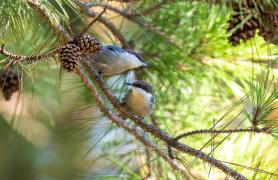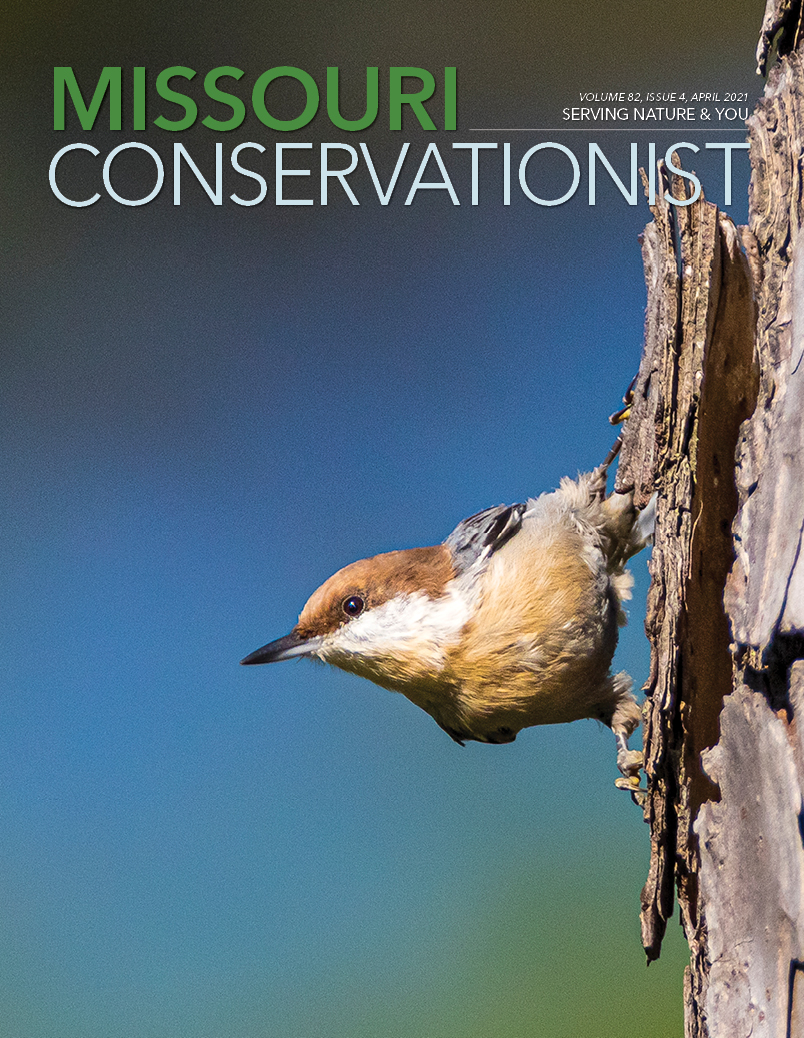
In her first week as a college freshman, Northwest Missouri State University student Kaitlyn Richey found herself kneeling on freshly disturbed earth in the steamy August heat. Sweat dripped from her nose as she packed dirt around the base of what had just become the newest tree on campus — a dawn redwood.
Richey’s mind then wandered to the future. This tree would grow to be strong and sturdy during her time at Northwest, just as she hoped she would. She promised herself she would come back to take a photo beside the tree each year until graduation. By participating in Northwest’s annual freshman tree planting ceremony, Richey was already leaving marks on her campus that would last long after graduation.
This Northwest tradition of planting a tree in honor of each freshman class aligns with the campus’ legacy as the Missouri Arboretum, as well as its recognition by Tree Campus Higher Education.
Tree Campus Higher Education
Tree Campus Higher Education is a program that recognizes colleges and universities nationwide for their commitment to establishing and sustaining healthy campus forests, as well as actively engaging staff and students in those efforts. The Arbor Day Foundation has overseen this program since its creation in 2008.
Through this program, college students nationwide get involved with hands-on learning projects through tree planting efforts on campus and within their communities. Tree Campus Higher Education recognizes nine Missouri colleges and universities, with the University of Missouri–St. Louis (UMSL) being the most recent to gain recognition.
Russell Hinnah, MDC community forestry supervisor, oversees Tree Campus Higher Education in Missouri. Hinnah reviews applicants to ensure they meet five core standards that serve as the backbone of Tree Campus Higher Education, which they must then continue to meet. Perhaps the most significant of the five standards is the requirement to hold an annual Arbor Day observance and to involve students in service-learning opportunities on campus.
Recent UMSL graduate Madison Hallbrooks believes it is important for students to set a good example for younger generations and older generations alike. She saw this firsthand on her campus by participating in UMSL’s Arbor Day celebration each fall and planting trees on campus with assistance from students, faculty, and staff of varying ages.
Recently retired, Missouri Arboretum Director Patrick Ward believes students are ready to listen, maybe even more so than adults.
“The younger generation is a little more attuned to how we are squandering our resources,” Ward said. “They have to live in the environment that’s being produced, and so, it’s them that’s got to save us from the problem.”
Trees Heal
Trees help combat this problem Patrick Ward speaks of, acting as Mother Nature’s lungs and providing the oxygen we breathe while sequestering carbon dioxide. As these quiet giants work to combat pollution and add great beauty to Missouri’s campuses, they also provide various psychological benefits, ones especially significant on college campuses.
Studies show that individuals spending time surrounded by trees can significantly improve overall mental health. Green environments create calming spaces and are known to lessen fatigue, depression, and anxiety, while also supporting relaxation and improving creativity.
Birds chirping, leaves rustling in the breeze, or a beloved campus squirrel scurrying across the sidewalk momentarily captures a student’s attention before it shifts to something else. Involuntary attention like this provides the mind with a brief rest period and allows it to recharge — something much needed by many college students.
Test scores and retention rates have also been found to increase with views of nature from the classroom. Whether it is looking out a dorm room window, walking to and from class across campus, or studying in a hammock, healthy tree cover provides a serene, green backdrop to the bustling scene of a college campus. Teaching this generation of future leaders about the incredible benefits trees offer, while also actively engaging them in efforts to plant and care for trees, is key to safeguarding our natural spaces as well as public health.
Getting Involved
Little did Richey know during that freshman tree planting ceremony that she would be involved in numerous tree plantings during her time at Northwest. In November 2019 she joined Bearcats Going Green, a campus organization that started its own tree-planting tradition on campus, helping to fulfill Tree Campus Higher Education’s requirement of engaging students in service-learning projects. Bearcats Going Green began the tradition as a way to reward winners of its new annual homecoming recycling contest, as well as engage students campus-wide in recycling and sustainability efforts.
The men of Epsilon Lambda chapter of Delta Sigma Phi were recognized in the first annual tree planting. As the first annual winners, the fraternity joined Bearcats Going Green in planting a princess Cherokee dogwood — the first of its kind in the Missouri Arboretum — just outside Northwest’s library.
Across the state, these service-learning projects take many different forms. For one past Drury University project, international students chose trees culturally important to their home country to plant and share information about. A large group of sorority and fraternity members at UMSL contributed to its first-ever service-learning project by planting more than 40 bare-root saplings across the campus.
Projects like these help students understand the impact trees have, something to be carried over their lifetime, as well as instilling a sense of pride for their contribution to both the environment and campus community.
Funding Maintenance
Proper maintenance and care for an urban forest can require a great deal of resources. In 2019, 402 recognized campuses across the United States spent a combined total of more than $55 million on tree planting, care, and management, including $834,000 spent on Missouri’s nine recognized Tree Campuses. MDC offers financial assistance for Tree Campuses within the state through the Tree Resource Improvement and Maintenance (TRIM) program. In Fiscal Year 2019, MDC awarded TRIM funds totaling $54,426.
Gregory Ward, UMSL ground supervisor, relies heavily on MDC funding. In 2019, UMSL used this money to update its tree inventory and purchase a database to help guide the work needing to be done on the campus of about 2,400 trees. With the new database, Ward’s crews were able to identify high-risk trees needing removal as well as pinpoint ideal sites for future trees.
“Without this grant, we wouldn’t be able to do what we have to do to keep our campus safe and beautiful,” he said.
Unity in Landscape
The landscape of a college campus holds a special job, bringing all aspects of the college together. This is perhaps one of the only entities of a campus that everyone interacts with. Not all members of a campus community attend football games, study in the library, or eat in the dining hall, but everyone is touched by the landscape.
Joe Fearn, head groundskeeper at Drury University, said this is something he thinks about all time. “I want students and others to feel comfortable, safe, enriched, revitalized, and relaxed by the landscape.”
Through recognition by Tree Campus Higher Education, universities serve as anchors for neighboring communities. In the St. Louis area, for example, UMSL has begun to work closer with neighboring municipalities as they see the university’s growing involvement with Tree Campus Higher Education. While some surrounding cities have long been active within Tree City Higher Education, others have seen UMSL’s participation in this program as the inspiration needed to become involved. By keeping a vested interest in the land they occupy and demonstrating proper urban forest management, Missouri’s Tree Campuses serve as regional leaders, far beyond the confines of their individual campus.
It is abundantly clear that increasing the presence of trees in our lives can bring unmatched benefits to communities, natural environments, and public health, something that Tree Campus Higher Education is dedicated to ensuring continues on college campuses nationwide.
If interested in getting involved with Tree Campus Higher Education projects, or encouraging your college or university to apply for such recognition, reach out to the grounds, facilities, or arboretum supervisor on your campus.


















Also In This Issue

Inaugural class of elk hunters share lessons learned.

Brown-headed nuthatches return to Missouri’s pine woodlands.
And More...
This Issue's Staff
Editor - Angie Daly Morfeld
Associate Editor - Larry Archer
Staff Writer - Bonnie Chasteen
Staff Writer - Kristie Hilgedick
Staff Writer - Joe Jerek
Art Director - Cliff White
Designer - Shawn Carey
Designer - Marci Porter
Photographer - Noppadol Paothong
Photographer - David Stonner
Circulation - Laura Scheuler






















